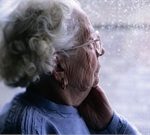
Midwestern states are starting to see surges in coronavirus cases, just as Southern and Western states are scrambling to contain their own outbreaks of COVID-19. Missouri, Montana and Oklahoma are among those witnessing the largest percentage surge of infections over the past week, the Washington Post reported. At the same time, the number of new cases in Florida, Mississippi and Alabama still outpaced all other states. Experts also see worrying trends in major East Coast and Midwest cities, the Post reported, and they anticipate major outbreaks in college towns when classes resume in August. Still, President Trump continued his push to fully reopen schools on Monday. “Ideally, we want to open those schools. We want to open them,” Trump said during a White House coronavirus task force briefing. Dr. Anthony Fauci, the nation’s top infectious diseases expert, on Monday agreed with that sentiment, telling CNN that schools and college campuses across the country should be able to reopen, but officials need to make safety a priority. The default position with kindergartens, grade schools and high schools should be to reopen them, Fauci, director of the National Institute of Allergy and Infectious Diseases, told CNN. On college campuses, Fauci said plans should include testing people before they arrive on campus, when they arrive and quarantining them for 14 days. “If done properly, it would not be… read on >























-300x200.jpg)













